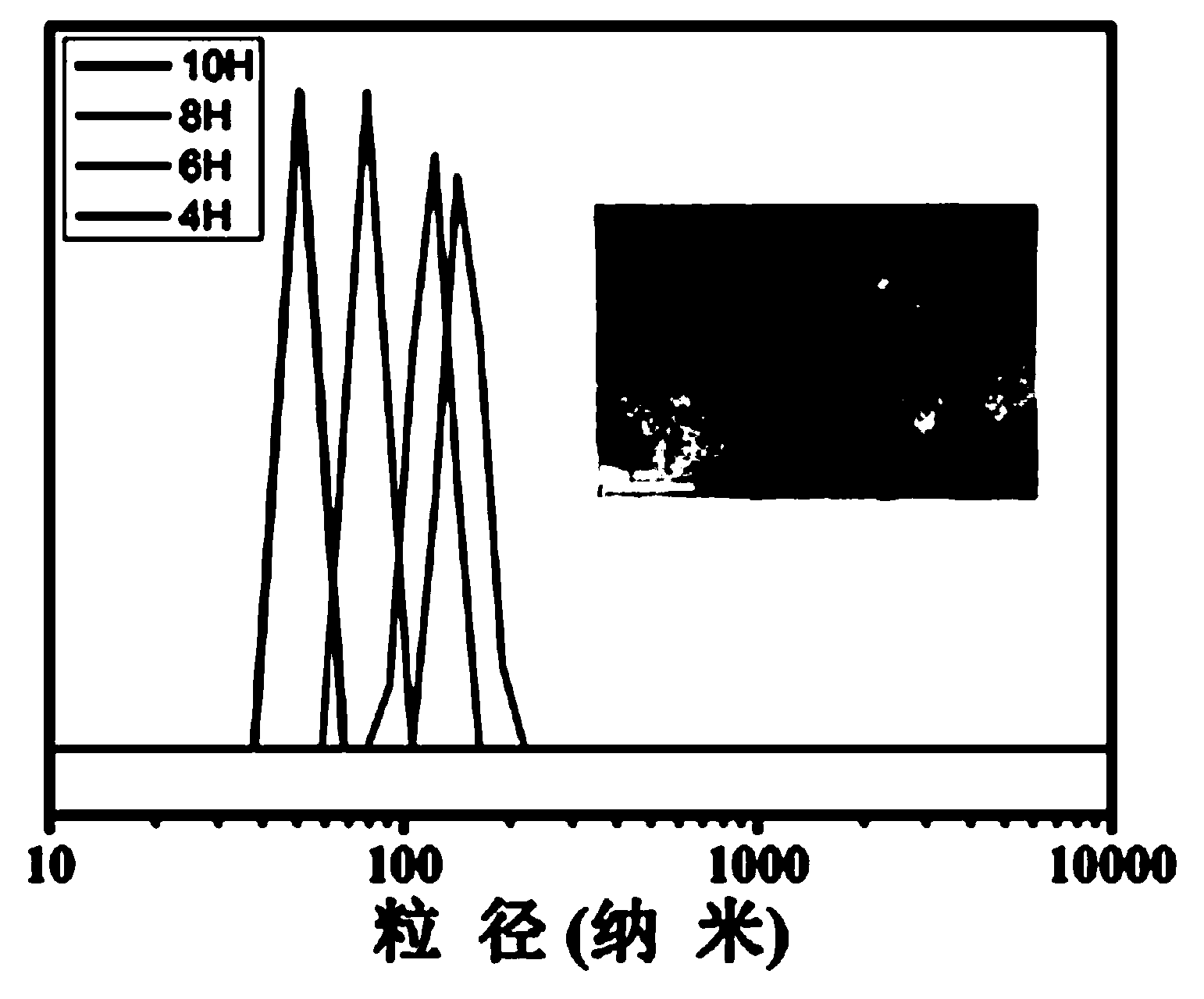Method for preparing surface-functionalized cellulose nanospheres
A technology of surface functionalization and cellulose, which is applied in the field of preparation of cellulose nanocrystals, can solve the problems of non-uniform size of cellulose nanospheres, long reaction time of enzymatic hydrolysis, and reduced thermal stability, so as to shorten the preparation cycle and prepare The effect of mild and easy-to-control conditions and narrow distribution
- Summary
- Abstract
- Description
- Claims
- Application Information
AI Technical Summary
Problems solved by technology
Method used
Image
Examples
Embodiment 1
[0024] Add the microcrystalline cellulose fiber into the calcium hydroxide solution with a concentration of 1mol / L, swell at room temperature for 4 h, wherein the mass-volume ratio of the fiber to the lye is 0.02 g / mL, filter the above mixed solution, and wash the product with water several times , until PH=7, at 50 o C and dried to constant weight; then the above product was added to the mixed acid solution obtained by mixing hydrochloric acid and formic acid with a concentration of 2 mol / L and a ratio of 1:9 to fully infiltrate, wherein the mass volume ratio of fiber to acid solution was 0.008 g / mL, put the above solution into the reaction vessel, at 65 oUnder the temperature of C, react for 6 h under stirring with a tetrafluoroethylene stirring paddle, after the above reaction product is naturally cooled, add 2 mol / L ammonia solution, adjust the pH value of the solution to 7, and obtain a uniformly distributed cellulose nanosphere dispersion. Then the dispersion liquid...
Embodiment 2
[0026] Add the lyocell fibers to a sodium hydroxide solution with a concentration of 2 mol / L, and swell at room temperature for 6 h, wherein the mass-volume ratio of the fibers to the alkali solution is 0.1 g / mL, filter the above mixed solution, and wash the product with water for several times until the pH =7 at 75 o C and dried to constant weight; then the above product was added to the mixed acid solution obtained by mixing hydrochloric acid and formic acid with a concentration of 5 mol / L and a ratio of 1:9 to fully infiltrate, wherein the mass volume ratio of fiber to acid solution was 0.016 g / mL, put the above solution into the reaction vessel, at 75 o C, reacted for 8 h under stirring with a tetrafluoroethylene stirring paddle, after the above reaction product was naturally cooled, 3 mol / L hydrazine hydrate was added, and the pH value of the solution was adjusted to 7 to obtain a uniformly distributed cellulose nanosphere dispersion. Then the dispersion liquid was c...
Embodiment 3
[0028] Add the waste cotton fiber to the barium hydroxide solution with a concentration of 1mol / L, and swell at room temperature for 4 h, wherein the mass-volume ratio of the fiber to the lye is 0.04 g / mL, filter the above mixed solution, and wash the product several times until PH=7, at 65 o C and dried to constant weight; then the above product was added to the mixed acid solution obtained by mixing hydrochloric acid and acetic acid with a concentration of 7 mol / L and a ratio of 1:9 to fully infiltrate, wherein the mass volume ratio of fiber to acid solution was 0.012 g / mL, put the above solution into the reaction vessel, at 70 o C, reacted for 7 h under stirring with a tetrafluoroethylene stirring paddle, after the above reaction product was naturally cooled, 1mol / L sodium hydroxide solution was added to adjust the pH value of the solution to 7, and a uniformly distributed cellulose nanosphere dispersion was obtained. Then, the dispersion was centrifuged and washed thr...
PUM
 Login to View More
Login to View More Abstract
Description
Claims
Application Information
 Login to View More
Login to View More - R&D
- Intellectual Property
- Life Sciences
- Materials
- Tech Scout
- Unparalleled Data Quality
- Higher Quality Content
- 60% Fewer Hallucinations
Browse by: Latest US Patents, China's latest patents, Technical Efficacy Thesaurus, Application Domain, Technology Topic, Popular Technical Reports.
© 2025 PatSnap. All rights reserved.Legal|Privacy policy|Modern Slavery Act Transparency Statement|Sitemap|About US| Contact US: help@patsnap.com

